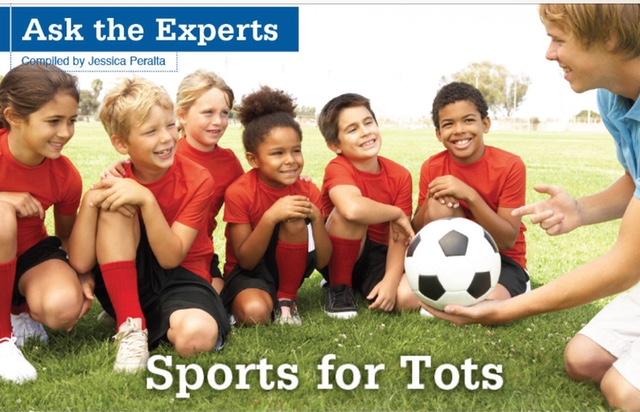This article on Starting Sports is a partnership between ActiveKidMD and the September, 2018 edition of ParentingOC.
At around 15-18 months, age-appropriate movement for children includes running, throwing or kicking a ball.
These simple skills are part of normal toddler development. At this time, it is natural for parents to begin thinking about when to start organized sport activities.
However, children this young are not quite ready for more complex tasks. These include being taught proper throwing or kicking technique or learning to follow formal rules.
All play at this age should be fun and spontaneous with minimal organization. Let the child lead in terms of how much and what to do.
I do highly recommend that all pre-school and early school–aged children learn skills such as balancing, tumbling, rolling, and jumping.
No matter what activity is selected later in life, command of these fundamental tasks will enhance future athletic ability and overall safety.
Formal introduction of organized sports should usually begin at age 5 at the earliest.
STARTING SPORTS: Why age 5?
Most five year-old children have developed an long-enough attention span to listen, work with other children, and follow simple multi-step commands.
They also can learn a task in one situation (school) and repeat it in a new situation (home).
All these reasons explain why children tend to start kindergarten at age five, and these abilities can allow them starting more formal sport activities.
From age 5-8, the main emphasis should be on fun and learning of multiple basic sport skills.
There should be limited focus on competition (keeping score or standings) as competition is so complex it may interfere with learning skills. Too much emphasis on competition may deter a child from prematurely deciding to quit sports.
STARTING SPORTS: Repeat as many times as necessary: there should be limited focus on competition.
Contrary to the beliefs of many parents and coaches, early starts or success in sports is not consistently correlated with success in later years.
If you are early to throw and run, then that means you are early to throw and run- nothing more.
For those 5 year-old children who don’t have an interest or apparent skills in sports, then no harm and no foul.
Just because a child isn’t ready at 5 doesn’t mean they have missed out.
Many examples exist of the “late bloomer” who when older excels and enjoys playing sports.
Most sensible to allow young children to sample different sports and develop a variety of movement patterns and potential interests
Probably best to start with one organized activity at a time. Try not to underestimate the value of child-directed free play. Children who have more free play that adult directed activities tend to have less injuries as they progress in sports.
KEY TIP: Want a good guide on how much to do? Keep your child’s age in mind. Injury rates go up if hours per week of organized sport are higher than age in years.
Starting sports: start slow, and stay slow
Speaking of progression, be aware of how some sports become “all inclusive” at relatively young ages.
Take the 5 year-old just starting organized sports and fast forward just three years.
I’m amazed at how many 8 year olds are participating in just one sport on year-round or nearly year-round basis.
Don’t immediately assume that more is better at a younger age.
More and more data suggests that sports sampling and holding off on sport-specialization until early adolescence is best for long-term health and development.
RELATED CONTENT: Early to Specialize: Will It Make Your Child Athlete Healthy, Wealthy and Wise?
At young ages, the “winning percentage” should not be based on any measure of wins and losses, but rather on how much fun the children have and how many want to play again the next season
Click here for more outstanding Ask the Experts posts from Parenting OC



